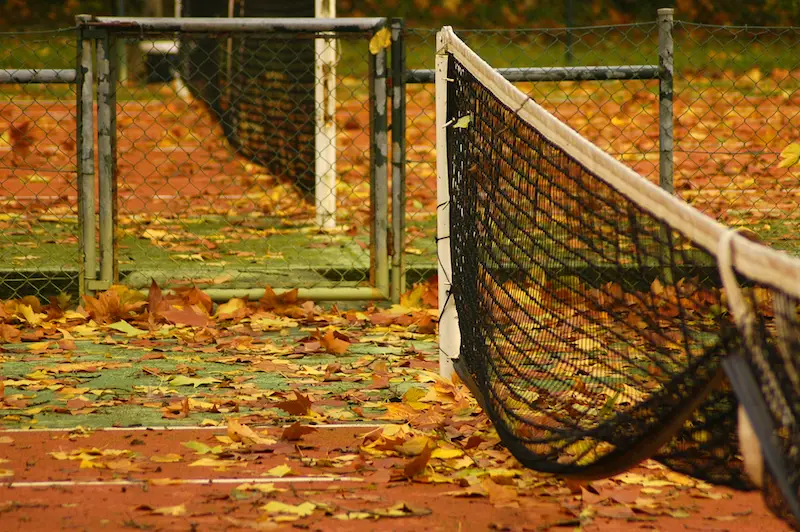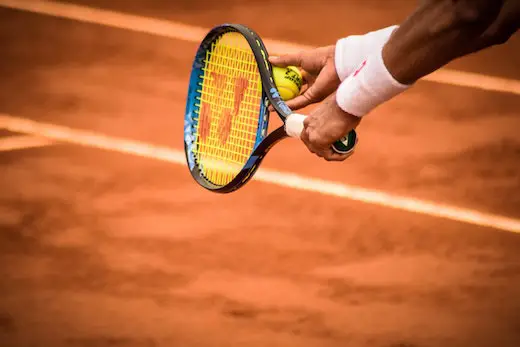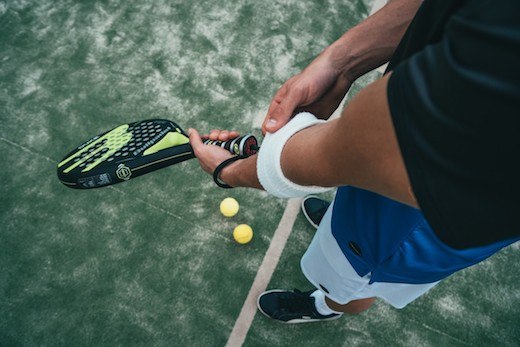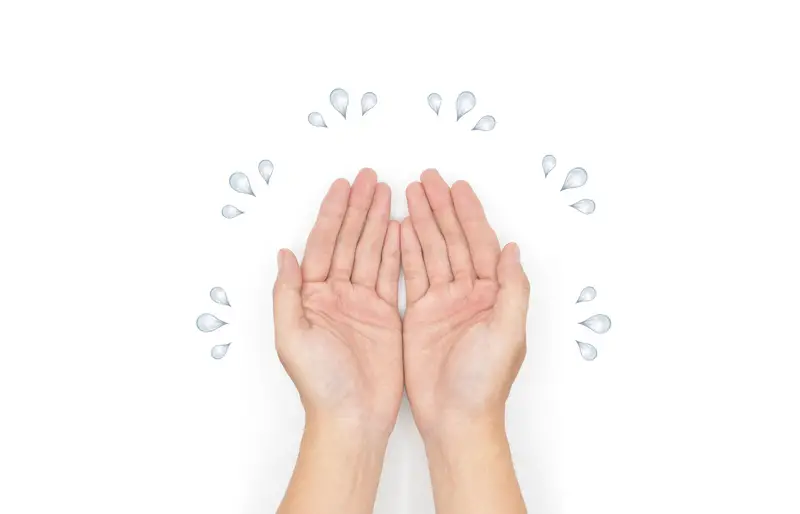- Cold Weather – Very Low Bounces
- Mild Weather – Decent Bounces, Not Overly Lively
- Hot Weather – Very Bouncy and Lively
Your Guide
 Gavin Davison
Gavin Davison
Did you know that the temperature can actually affect how a tennis ball bounces?
I’ve had a fair bit of experience with this, having played tennis all over the world.

But for those who haven’t really played in various locations, the impact that temperature can have on the ball would surprise you!
For example, I grew up in the United Kingdom, and let me tell you – those balls would barely GET OFF THE GROUND in the WINTER TIME .
But I’ve also played college tennis in South Carolina, where the temperature was always hot towards the end of season and the balls would bounce ALL OVER THE PLACE.
For a relatively short guy like myself, this could often be a bit of a nightmare!
Perhaps I should have kept my career going on home soil in the freezing cold?
Anyway, as you can no doubt see already, the temperature definitely impacts how the ball bounces, and it can completely change the game.
What You Can Expect for Each Condition
Since tennis is a sport that is played all over the world, it goes without saying that it is played in different temperatures.
That’s why tournaments in Spain are quite different from tournaments in the UK!
With that said, it’s important that you understand how the temperature will actually impact the bounce of the ball, so here you are:
1) Cold Weather
As I’ve touched upon above, cold weather is the absolute worst condition possible if you want the ball TO BOUNCE.
When temperatures get low, the ball will barely react to the surface and any heavy groundstrokes will have no impact whatsoever.
That’s why cold weather is also well suited to players that hit the ball very flat, or for those that like to slice the ball a lot of the time.
Since the ball won’t be bouncing anyway, there is no need to try and hit excessive spin, as all of the venom will be taken out of the ball once it hits the surface.
2) Mild Weather
In my personal opinion, mild weather is the best for tennis.
You won’t be dealing with freezing temperatures, you won’t be sweating uncontrollably, and the bounce on the ball is just right.
In addition to this, not only is mild weather a COMFORTABLE CONDITION to play in, but it prevents the ball from springing wildly once it hits the court surface.
This obviously benefits some more than others, which was actually a major complaint from Rafael Nadal during the 2020 French Open, which was played during the Autumn instead of early Summer.
Then again, it can’t have affected him that much, as he still smoked Novak Djokovic in the final to win yet another French Open title.
3) Hot Weather
There are many players that prefer hot temperatures over the other two categories.
In hot weather, the ball will bounce much higher than usual, and to be perfectly honest, it’s easier to get longer rallies in hot weather.
This is great for players that are still learning the game, as they can then build on their strokes and develop confidence in their game.
Personally, while I don’t mind playing in hot weather, it’s not my favorite. It can sap your energy and all of those high balls can be pretty exhausting.
How You Can Adjust for Each Condition
While you can’t control the temperature, of course, you can certainly control how you respond to it.
Depending on the conditions, you might need to change your game in order to play the best, or rather the most effective tennis that you can.
On that note, let me show you some different ways you can adapt based on the temperature:
I) Cold Weather
When it’s cold, just remember that the ball won’t react well to the court surface and it won’t really bounce either.
For that reason, if you are someone that likes to hit with a lot of topspin, you might want to consider flattening out the ball.
This will ensure that your opponent doesn’t get a sitter at the other end. Alternatively, you could always start to throw in a FEW MORE SLICES, as slice shots will stay super low during cold weather.
II) Mild Weather
Mild weather provides a Happy Medium for players of all styles.
As I’ve stated previously, the balls won’t bounce super high in mild weather, but they also won’t bounce ridiculously low either.
For that reason, if you do hit heavy, you can continue as you normally would.
But if you are a flat hitter, you might want to consider mixing things up with heavy spin, more slice, and even come to the net to volley at times.
Mild weather pretty much suits all strokes, which is why it’s my preferred condition to play in.
III) Hot Weather
Finally, hot weather can be just as problematic as cold weather.
Here you’ll notice that the balls are bouncing way higher than usual, which causes many issues in itself. In terms of how you can adapt, you might want to drop back in the court to avoid making contact above your shoulder level.
You may also want to RAMP IT UP in terms of topspin as the ball will react incredibly well to the surface, especially on clay or hard courts.
And when it comes to serving, you can also add some topspin to your second serves since it will kick off the court nicely.
Conclusion
So there you have it – the way that a tennis ball bounces in all temperatures.
I hope that after reading this you are feeling more comfortable with your understanding of how tennis balls will REACT FOR EACH CONDITION.
And at the same time, I hope you can apply the tips I’ve mentioned about adapting your game to suit each temperature.
Has this article helped? Do you have anything you’d like to add? Let us know in the comments.


